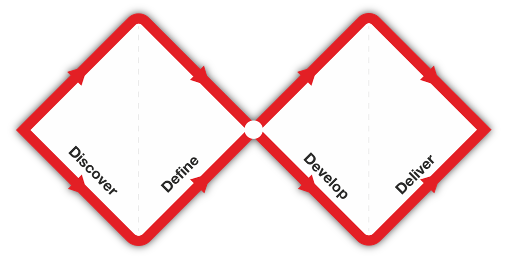Thought Leadership
Unleashing empathy's potential
Unleashing empathy's potential: a blueprint for design transformation
In a world of constant change, many brands are permanently playing catch-up with the breakneck speed of transformation.
"Change before you have to." - Jack Welch
The power to drive change has always rested in the hands of those determined to make it happen. Increasingly, organisations are looking at various potential avenues to instigate change, and among the many paths to transformation, design stands as a powerful catalyst. Design thinking has become a central force in reshaping how businesses operate and connect with their audiences.
"The best way to change the future is to design it." - M. Cobonli
Origins: the surprising connection between ancient wisdom and modern design
To understand the future of transformation and progress, let's first go back in time and rediscover the roots of human evolution.
Mankind has transitioned from an era in which discoveries seemed almost accidental, sometimes even arising from sheer coincidence. From mastering fire to inventing the wheel, each discovery marked a pivotal step in our ongoing progress. In ancient times, around 5th Century B.C., philosophers such as Aristotle introduced a pioneering method that melded observation-based reasoning with logic. This method, known as the inductive-deductive approach, was instrumental in shaping the foundations of the modern scientific method.
Through these intellectual endeavours, they didn't just gain theoretical insights - they also sparked practical innovations. Over time, this process transformed into the modern scientific method, bringing a more structured approach to fields such as engineering and product design.
While they have their unique qualities, today's design processes and scientific disciplines share common ground. They demand strong collaboration among diverse individuals to produce successful outcomes and unlock future opportunities.
Evolution: Charting the path of the design process
Designers dive deep into their subjects, uncover hidden opportunities, and craft imaginative solutions. They give life to prototypes, subjecting them to rigorous testing and fine-tuning. This design journey thrives on the sparks of abstract ideas and cherishes the human touch, making it a very emotional journey.
But there's a notable difference between the design process and the scientific method. While design kicks off with questions and seeks answers through creative experimentation and iteration, the scientific method only steps in when problems demand solutions.
Intriguingly, the design process has embraced elements of the scientific method. Take the Double Diamond Design Model, which borrows the idea of hypothesis generation to refine concepts through prototyping.

So, despite their differences, these two processes have some common aspects. They both demand flexibility, a constant commitment to active thinking, hands-on learning, and, most importantly, collaboration among diverse people.
Inspiration: Design as a change-making power
The late 19th and early 20th centuries saw design become a powerful tool for change. Companies realised that design could improve their operations, speed up product development, and lead to significant growth. Visionaries like Ford played a key role in this, introducing groundbreaking innovations like the moving assembly line to drive progress.
More recently, Airbnb initiated its transformation journey fueled by a design-centric mindset. This transformation yielded a culture of perpetual experimentation and rapid expansion. A compelling example is the story of Airbnb co-founder Joe Gebbia, who, driven by frustration over stagnant growth, embarked on a non-scalable experiment. Armed with a professional-grade camera, he captured high-resolution property photos, resulting in a doubling of revenue and paving the path for remarkable growth.
“You can live in a world of your own design, you can change the world, you can redesign it.” - Heard by Brian Cheeks (Co-founder of Airbnb) at Rhode Island’s School of Design
Core: Empathy at the heart of customer-centric design
However, there's one concept that really sets the design process apart – empathy.
The introduction of empathy in the context of design dates back to the late 1990s when companies began to realise that customer surveys alone couldn't provide deep insights.
Empathy plays a vital role in design, helping to bridge the gap between creators and users. It's more than just emotions, as it integrates an "external" element – customers. In the realm of design, customers become the driver for empathetic change.
Designers naturally empathise with customer needs, desires, and challenges. Good design goes beyond fulfilment. it aims to delight and serve while remaining accessible and purposeful. Customers are more than consumers; they are the key to business transformation that fosters enduring change.
Veriteer recognises the power of customers in driving change and promotes a strategy that focuses on customers. This approach creates tailored solutions that match customer goals and values.
"Empathy is at the heart of design. Without the understanding of what others see, feel, and experience, design is a pointless task." - Tim Brown, CEO of IDEO
Author: Iñigo Adin
Expertise: Service Design, Experience Design
Connect: LinkedIn |
